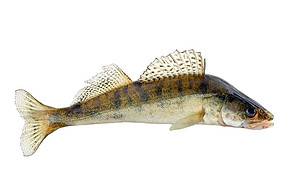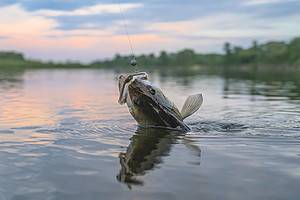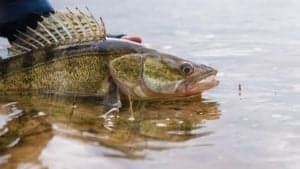The official South Dakota State fish is the walleye. Designated on February 22, 1982, this prestigious title recognizes the walleye’s extraordinary attributes and vital role in the state’s natural heritage. With its unique characteristics and significant presence in South Dakota’s lakes and rivers, the walleye has become an iconic symbol of the state’s abundant aquatic ecosystems.
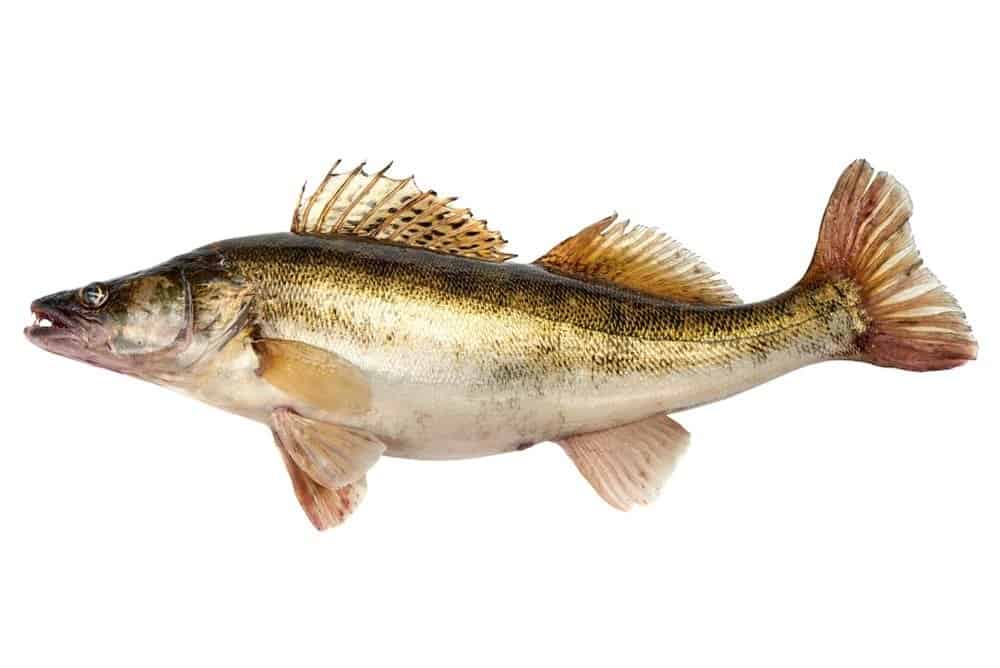
The walleye can range from olive brown to golden colors and has an elongated body.
©GSDesign/Shutterstock.com
Exploring the Walleye’s Distinctive Features
The walleye (Sander vitreus) boasts an unmistakable appearance. Its elongated body, ranging in colors from olive brown to golden, is complemented by its large glassy eyes. Positioned on the sides of its head, these eyes provide the walleye with exceptional night vision, allowing it to thrive in low-light conditions. Furthermore, its sharp teeth and spiky dorsal fin add to the allure of this magnificent fish.
Habitat and Range
In South Dakota, the beautiful terrain features many lakes, reservoirs, and rivers, providing an ideal walleye environment. These fish prefer clean and chilly waters with rocky or sandy bottoms. You can find this species throughout the state, including the Black Hills’ pure waters and the robust Missouri River.

Cultural Significance of the Walleye
The walleye holds deep cultural significance among Native American tribes in South Dakota. For centuries, tribes such as the Lakota Sioux have revered the walleye as a sacred species and a vital food source. They consider the fish a symbol of adaptability and perseverance, reflecting the qualities necessary for survival in the challenging environments of the Great Plains.
Recreational Fishing
South Dakota’s abundant lakes and rivers have established the state as a haven for recreational fishing enthusiasts. The walleye’s reputation as a prized game fish adds to the thrill and allure of angling in these waters. Anglers of all skill levels are drawn to the challenge by the walleye’s elusive nature and spirited fight.
Economic Impact
The walleye plays a significant role in South Dakota’s economy, contributing to tourism and generating revenue through recreational fishing and related industries. Fishing resorts, marinas, and guide services benefit significantly from the popularity of walleye angling, attracting visitors from far and wide who seek to experience the thrill of catching this remarkable fish.
Commercial Fishing
The commercial fishing industry in South Dakota also relies on the walleye for its economic viability. The regulated harvest of walleye provides employment opportunities and contributes to the state’s commercial fishing revenue. The popularity of this species supports a sustainable fishing industry that benefits both local communities and the overall economy.
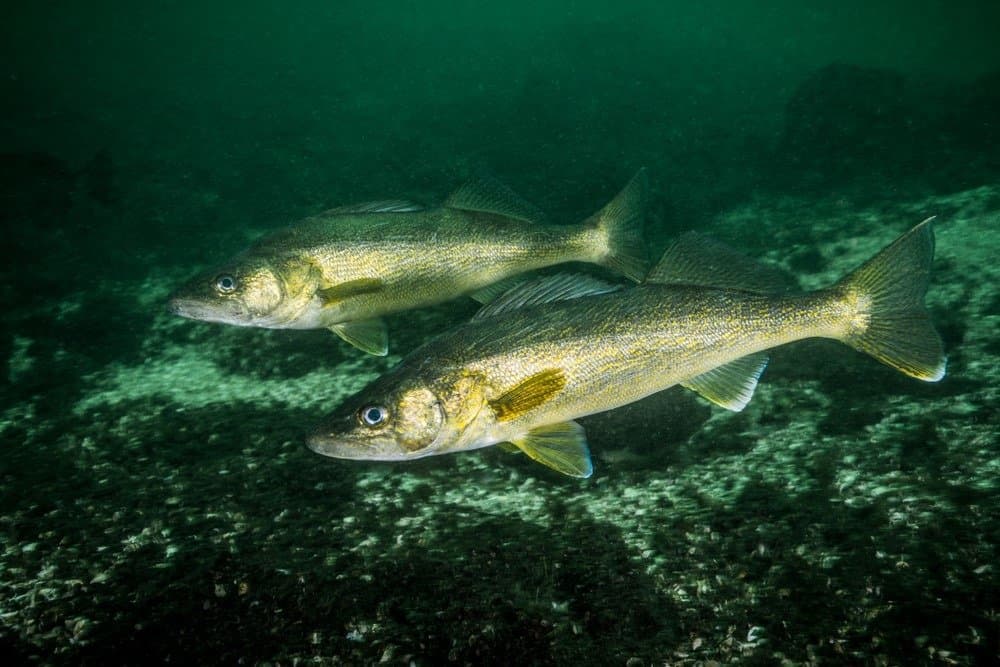
A walleye fish is a top predator in the freshwater ecosystem of South Dakota.
©RLS Photo/Shutterstock.com
Ecological Importance: Role in Aquatic Ecosystems
As a top predator in South Dakota’s freshwater ecosystems, the walleye contributes to maintaining ecological balance. Its feeding habits play a crucial role in the overall ecological well-being of the lakes and rivers it inhabits. By regulating the populations of smaller fish species, the walleye ensures the health and stability of aquatic communities.
Conservation Efforts
Due to its ecological importance and cultural significance, efforts are underway to conserve and protect the walleye population in South Dakota. Conservation organizations, governmental agencies, and local communities work together to implement sustainable fishing practices, habitat restoration projects, and educational initiatives to ensure the long-term survival of this iconic species.
Similar Species to Walleye
While the walleye holds the distinction of being the official state fish of South Dakota, there are several other fish species found in the state’s waters that share similar habitats and characteristics. Let’s explore some notable examples.
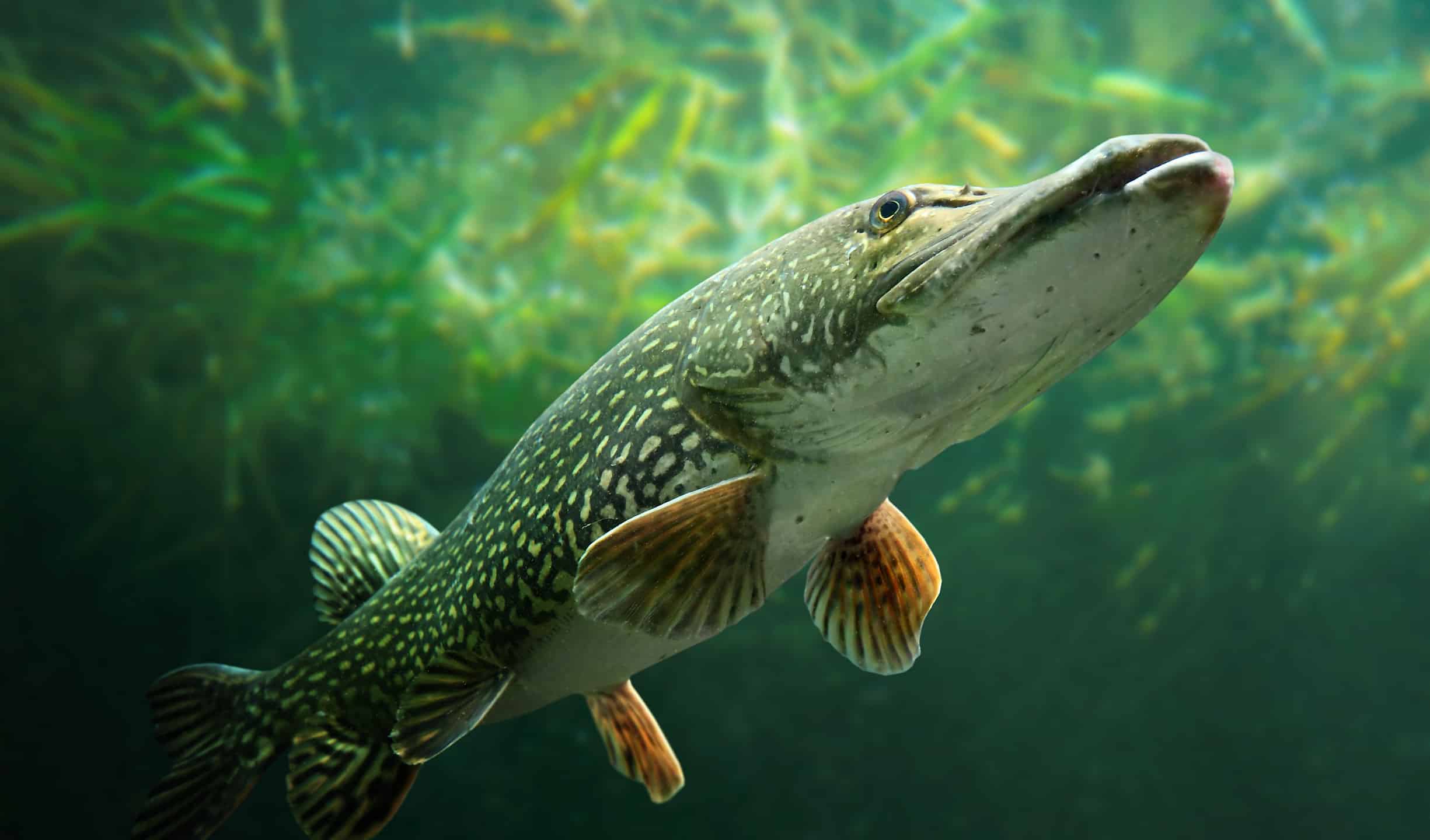
You can spot a northern pike with its slender, long body and sharp teeth.
©iStock.com/abadonian
Northern Pike (Esox lucius)
The northern pike is a predatory fish known for its long, slender body and sharp teeth. You can usually find this fish in the same freshwater habitats as the walleye, including lakes, rivers, and reservoirs. Like the walleye, the northern pike is known for its size, strength, and aggressive feeding behavior. Anglers often target both species while fishing in South Dakota’s waters.
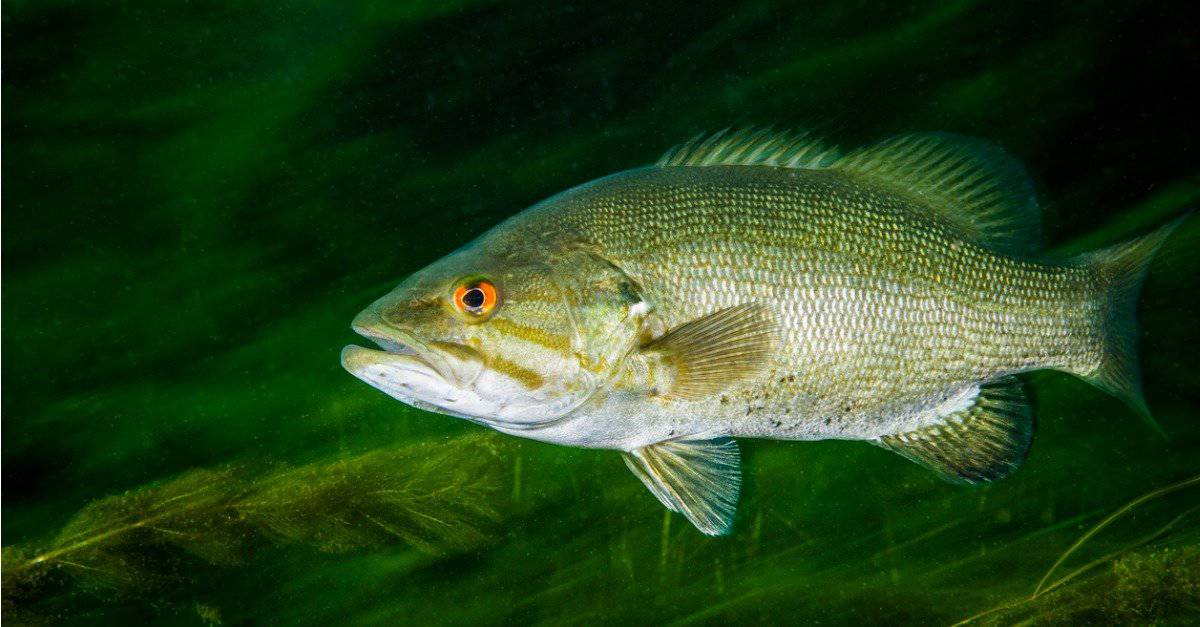
You can find smallmouth bass in rocky, cool water areas.
©iStock.com/RLSPHOTO
Smallmouth Bass (Micropterus dolomieu)
The smallmouth bass is another popular sportfish in South Dakota’s waterways. Known for its resilience and spirited fight, the smallmouth bass shares habitat preferences with the walleye. Both species are often in rocky areas with clear, cool waters. Anglers appreciate the challenge of targeting smallmouth bass, as they put up a fierce battle once hooked.

Yellow perch may be a small fish but it is highly popular among fishing enthusiasts.
©Keith Publicover/Shutterstock.com
Yellow Perch (Perca flavescens)
The yellow perch is a small but highly sought-after species in South Dakota’s rivers and lakes. It frequently resides in identical freshwater locations as the walleye, making it a common capture alongside its larger counterpart. While it may not share the same size and predatory nature as the walleye, the yellow perch is popular because of its abundance and delicious taste.
Other Popular Fish in South Dakota
Many fish species that attract anglers from all over inhabit South Dakota’s varied waterways. Besides the walleye, here are a few other popular fish you can find in the state.

You can identify channel
catfish
by their whisker-like barbels.
©iStock.com/Jenniveve84
Channel Catfish (Ictalurus punctatus)
Channel catfish are known for their distinctive whisker-like barbels and impressive size. They inhabit rivers, reservoirs, and lakes throughout South Dakota. Anglers enjoy targeting channel catfish for their fighting abilities and delectable meat. Catfishing is a popular pastime, and South Dakota’s waterways offer ample opportunities to pursue these whiskered giants.
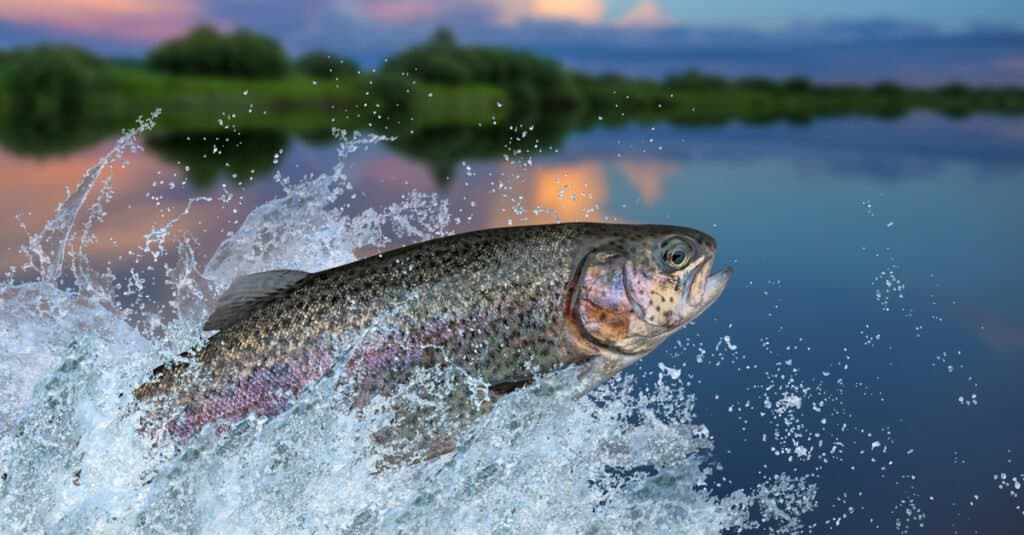
With its vibrant colors, it’s easy to spot a rainbow trout.
©FedBul/Shutterstock.com
Rainbow Trout (Oncorhynchus mykiss)
Rainbow trout are game fish known for their vibrant colors and acrobatic fights. They thrive in cool, well-oxygenated waters like streams, rivers, and lakes. With its clear mountain streams and reservoirs, South Dakota’s Black Hills region provides excellent habitat for rainbow trout. Anglers flock to these scenic areas to test their skills in catching these beautiful fish.
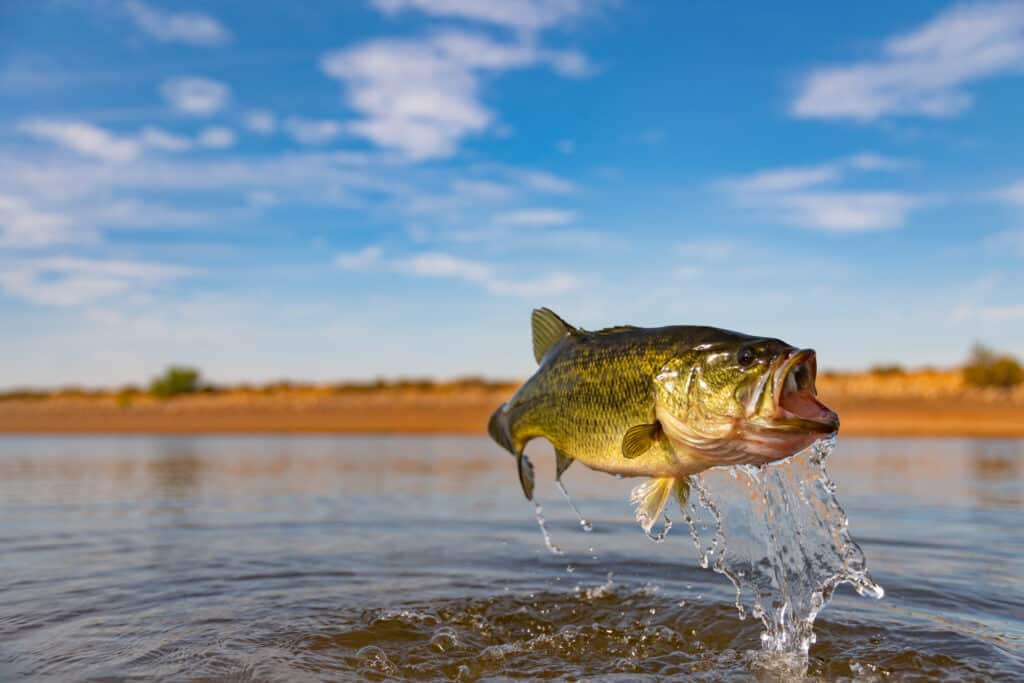
Largemouth bass prefer to be in weedy, warm areas.
©Ryno Botha/Shutterstock.com
Largemouth Bass (Micropterus salmoides)
South Dakota offers numerous opportunities for anglers to pursue largemouth bass, particularly in the eastern part of the state. Largemouth bass is renowned for its voracious appetite and powerful strikes. They prefer warm, weedy habitats such as lakes, reservoirs, and ponds. Anglers relish the challenge of enticing these elusive predators and enjoy the thrill of landing a trophy-sized largemouth bass.
Fishing Regulations and Management
The South Dakota Game, Fish, and Parks Department (SDGFPD) manages all fisheries in the state. Fisheries managers use various tools to ensure that walleye populations remain healthy and sustainable. The SDGFPD implements catch limits, size restrictions, and seasonal closures to protect spawning fish. Catch limits refer to bag limits, which state how many fish a person can take in one day. Size restrictions are used to preserve juvenile walleye from being taken before they can reproduce. Seasonal closures help ensure that anglers fishing do not disrupt spawning during this critical time of year.
These strategies work together to maintain healthy populations of walleye and ensure that future generations can enjoy this popular ice-fishing species. The SDGFPD has implemented several stocking programs and habitat improvement projects to further protect South Dakota’s walleye. Through these efforts, the SDGFPD hopes to increase population numbers and improve spawning success for this important fish species.
Anglers should also be mindful of the regulations related to ice fishing for walleye. For example, it is unlawful to transport fish taken from one body of water overland or through a public drainage system into another body of water without a valid fishing license. It is also illegal to possess over the daily limit of walleye or any fish listed as endangered.
Conclusion
The diverse waterways are home to various fish species, including the South Dakota official state fish, the walleye. Anglers can also find other similar species to the South Dakota state fish like northern pike, smallmouth bass, and yellow perch, as well as other popular fish, such as channel catfish, rainbow trout, and largemouth bass, making fishing in South Dakota an exciting experience.
To have a great fishing experience in the state, follow the state laws and regulations for ethical and legal fishing practices. South Dakota has specific rules on the size of fish you can catch, how many you can take home daily, and license requirements that all anglers must comply with.
The photo featured at the top of this post is © iStock.com/FedBul
Thank you for reading! Have some feedback for us? Contact the AZ Animals editorial team.



